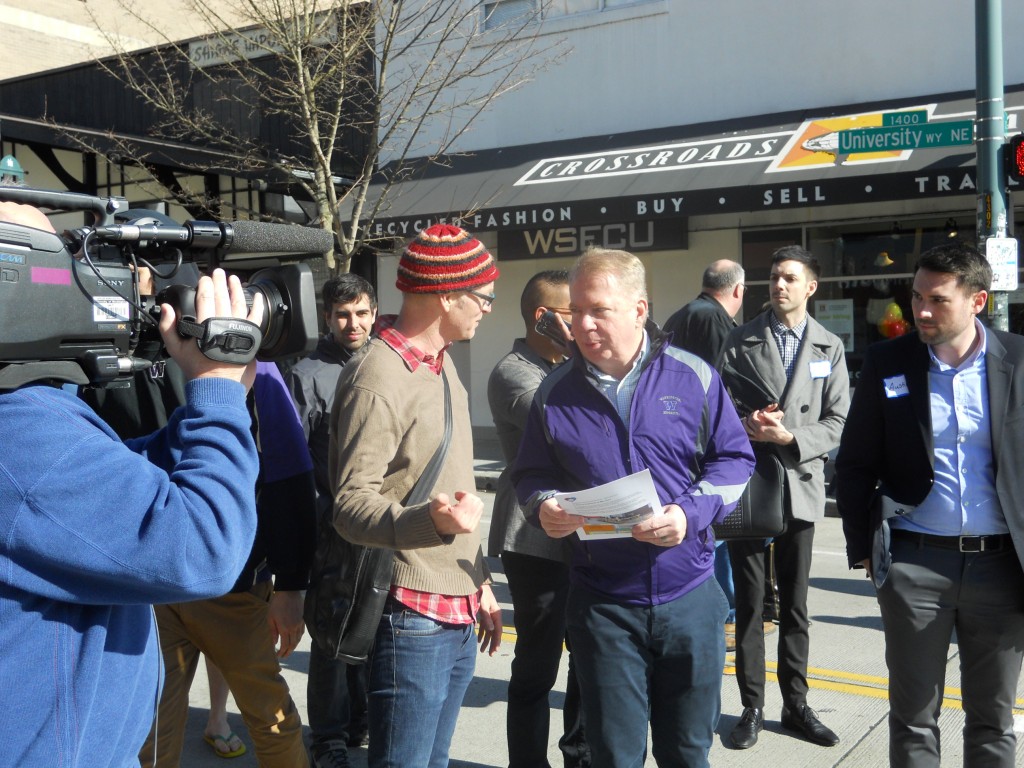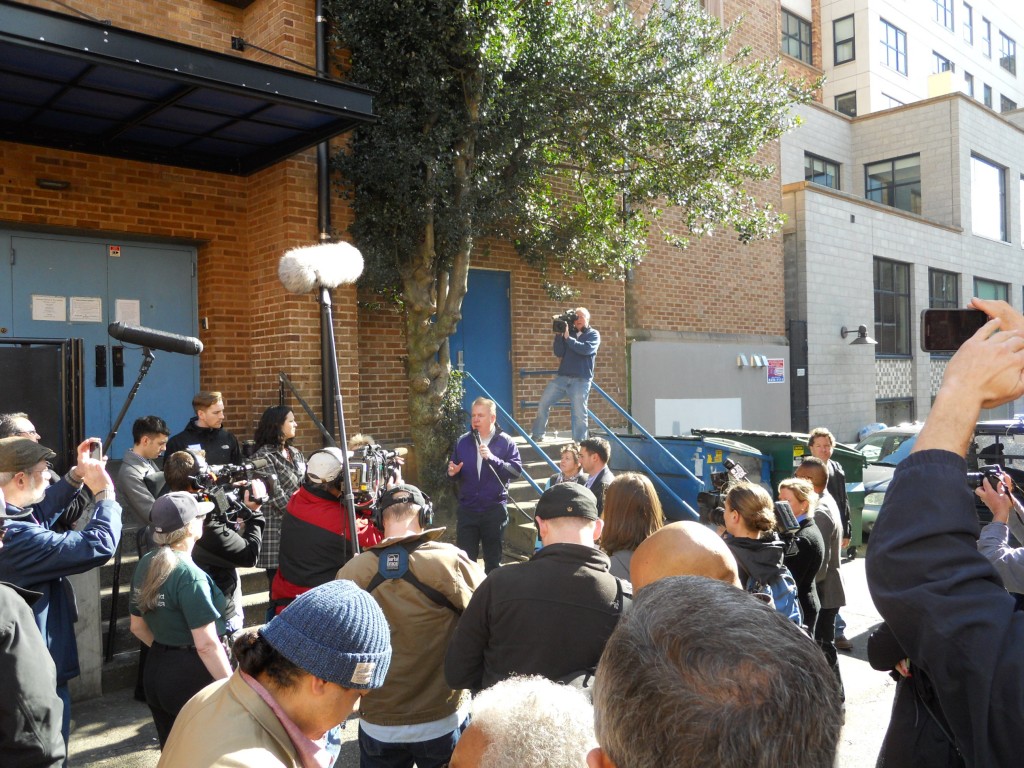
On Saturday, Seattle mayor Ed Murray continued his series of “Find It, Fix It” walks with residents of the University District. The event drew a large crowd and media presence, and wound through the neighborhood’s core with a police escort. Though named after a smartphone application that lets citizens quickly report problems like potholes, graffiti, and broken streetlights, the event focused more on projects and important figures in the neighborhood rather than infrastructure. This left little opportunity for citizens to directly engage with the mayor.
At the event’s starting point, NE 45th St and Brooklyn Ave NE, the mayor pointed to the University District light rail station construction site behind him and emphasized that it is the catalyst for drastic neighborhood change. He expressed hope for preserving the area’s eclectic character while ensuring new development has positive impacts. Numerous other local leaders gave brief introductions, including City Council members Jean Godden and Sally Clark. A few words were spoken by Dave LaClergue, the city planner overseeing upzoning, green streets, and open space efforts here, and Sound Transit’s project manager for the station construction.
From there, the crowd moved north to a grocery store parking lot at NE 50th St, an infamous location for drug dealing, assaults, and other criminal activity. A couple of local activists took the microphone to celebrate a community mural on the wall of neighboring building and suggested it had helped lower nuisance activity in the area. The crowd then moved down University Way, where a neighborhood patrol officer discussed other efforts to reduce crime. A representative from the U District Partnership (UDP) detailed the plan to expand a business improvement district to increase funding for street cleaning and community events.
Down at 43rd Street, Cory Crocker from U District Square handed Murray a flyer and briefly discussed the neighborhood effort to built a parklet on that corner, next to a Pronto! bikeshare station. The project is funded and will likely be built later this year. Crocker told me, “[Murray] said that the city is all for the parklet and mentioned that the city would be making an announcement soon about allowing adjacent businesses to serve in the parklets in order to engage the public more and manage the spaces. He also volunteered that he’d like to see that particular intersection much more pedestrian-friendly.”

In the alley between 43rd and 42nd Streets, Murray introduced Kristine Cunningham, executive director of the ROOTS organization that provides temporary shelter to young adults who have been rejected by the foster care system. She noted that ROOTS is just one of many similar social services in the neighborhood, and the challenges are increasing. The alley has also become more of a social space in recent years, with a neighboring university building providing a voluntary setback for bicycle parking and pizza shop entrance in the alley. It complements a cafe that also has its entrance on the alley there.
As the tour wound down, the mayor led led everyone across 15th Avenue to a lawn on the University of Washington campus. There, provost and interim university president Ana Mari Cauce described her view of the school’s role in the neighborhood. The university is a large landowner, but she didn’t speak to rising student housing prices or the physical separation of the campus from the rest of the neighborhood.
King 5’s Dan Cassuto critically reported the event as highly orchestrated, with little opportunity for the mayor to speak to various business owners about crime or to see the large number of people living on the streets here. While it was my first Find It, Fix It walk, I’d argue that’s a fair assessment. The event was as much a mobile photo op for the mayor as it was community outreach, if not more so. But along with briefly meeting the mayor, I did get the chance to talk to three of the city and Sound Transit staff who tagged along, including transportation director Scott Kubly. They were fairly receptive to conversation, though weren’t too enthusiastic about being there on a Saturday morning. In the future, I’d suggest the mayor’s office reach out to specific community groups for focused and meaningful conversations.
Scott Bonjukian has degrees in architecture and planning, and his many interests include neighborhood design, public space and streets, transit systems, pedestrian and bicycle planning, local politics, and natural resource protection. He cross-posts from The Northwest Urbanist and leads the Seattle Lid I-5 effort. He served on The Urbanist board from 2015 to 2018.


